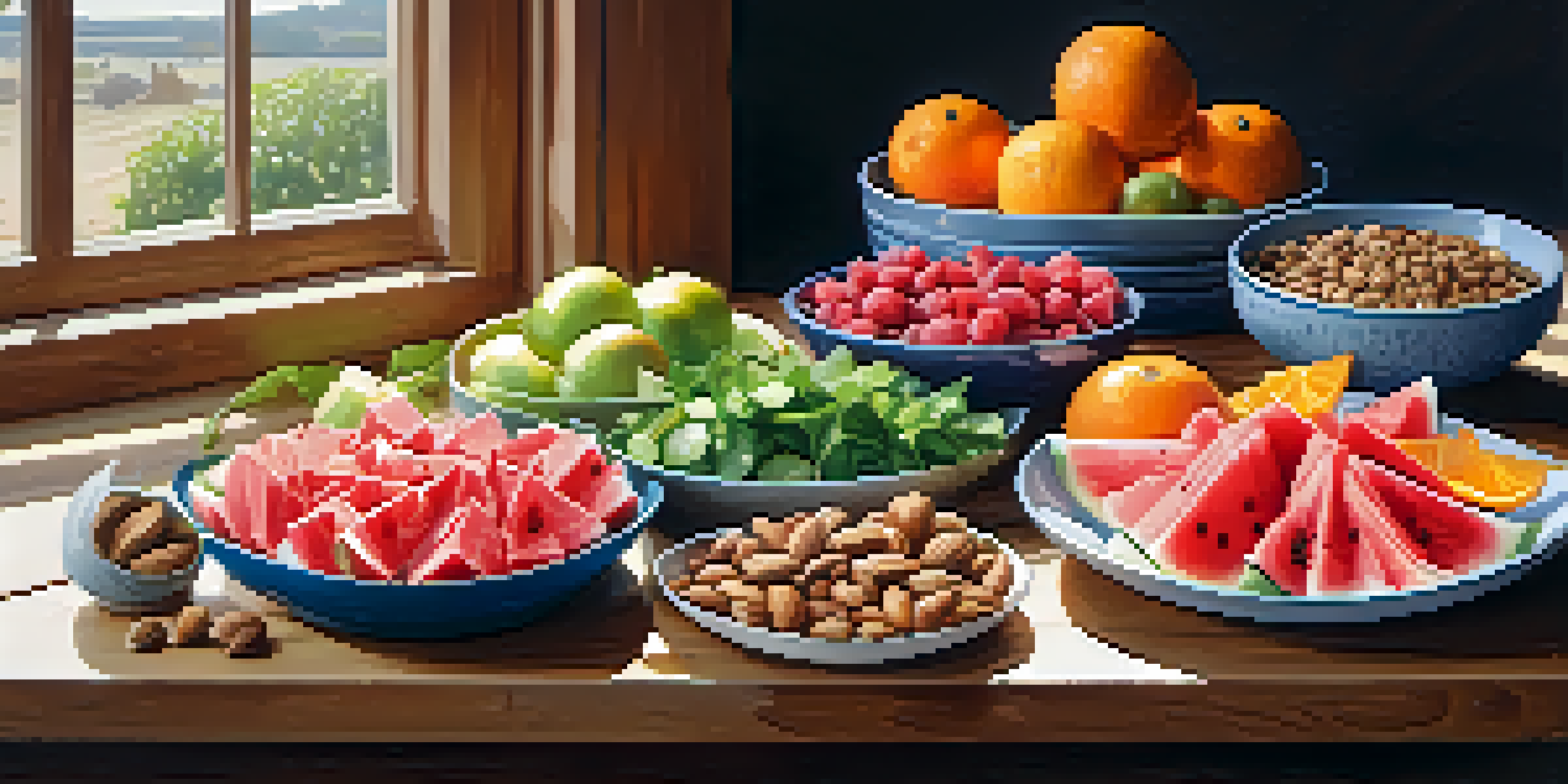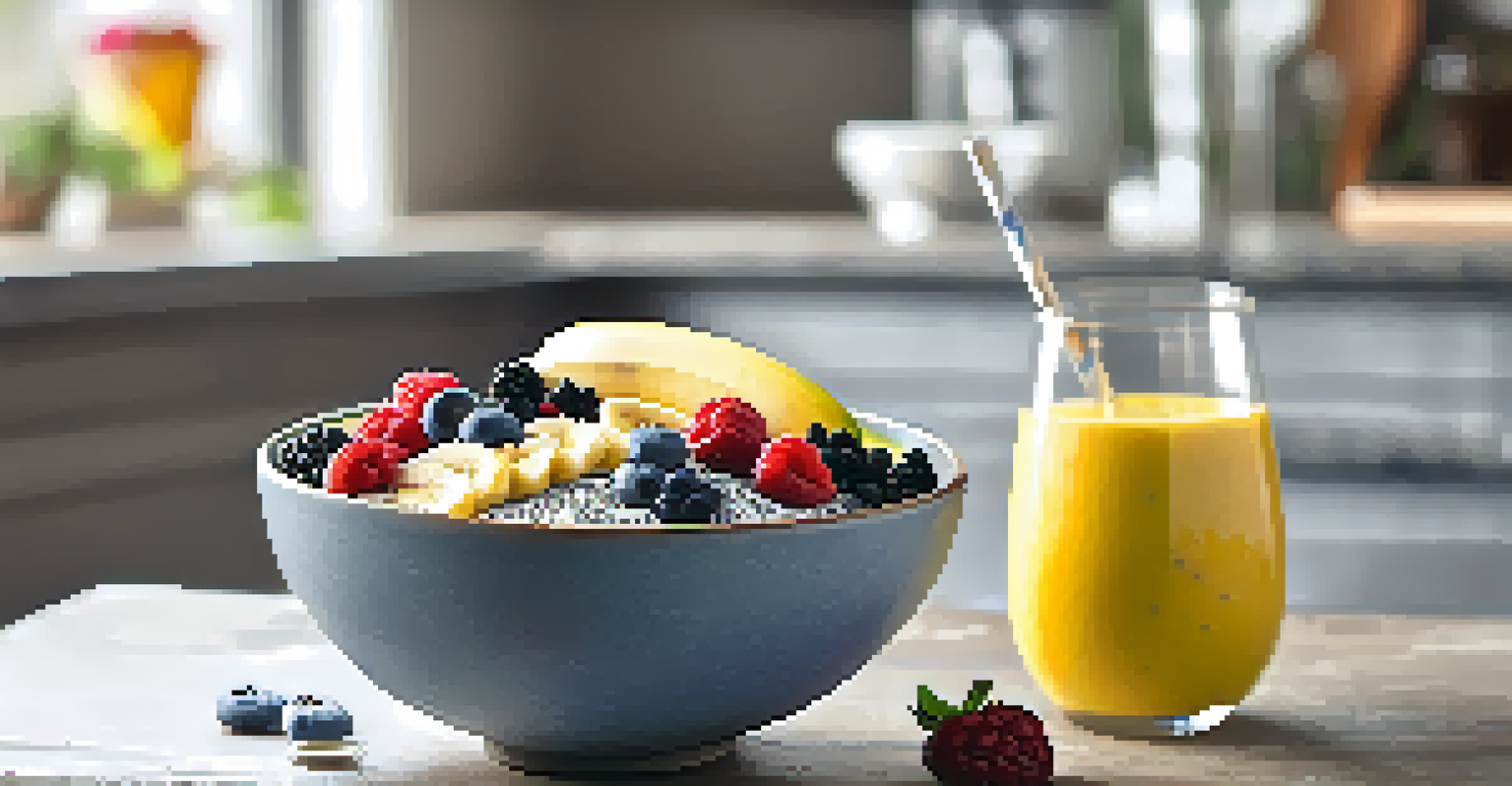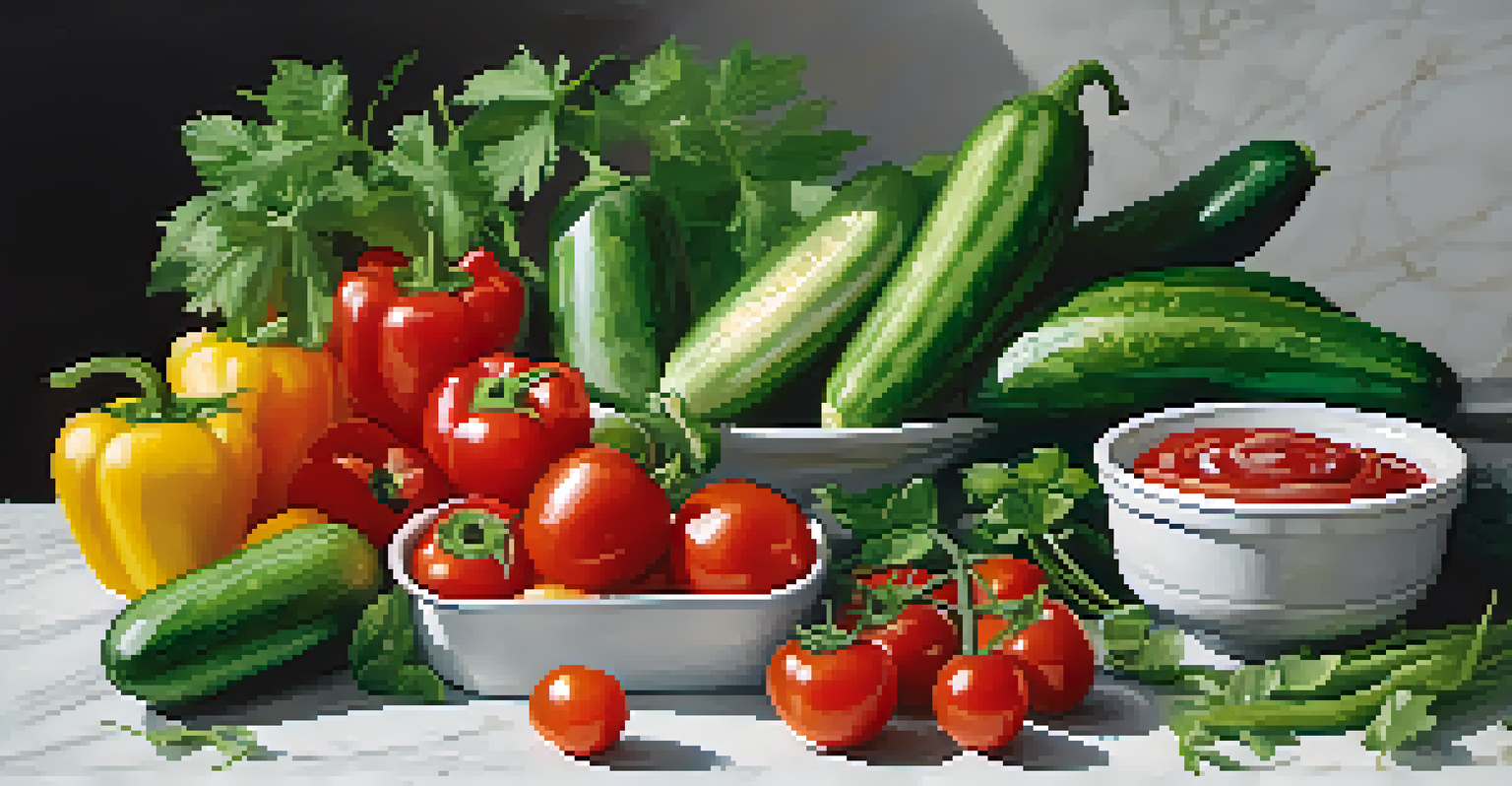How to Transition to a Raw Vegetarian Diet Smoothly

Understanding Raw Vegetarianism: What It Is
A raw vegetarian diet consists mainly of uncooked fruits, vegetables, nuts, and seeds. This lifestyle emphasizes fresh, whole foods that are minimally processed, which can boost your energy and health. It's different from a standard vegetarian diet as it excludes all forms of cooking, preserving the nutrients in food.
Let food be thy medicine and medicine be thy food.
People often choose this diet for various reasons, including health benefits, ethical considerations, and environmental concerns. By eating raw, you may find that your body feels lighter and more energized. However, it requires a commitment to preparation and planning.
Before diving in, it’s crucial to understand the nutritional aspects of what you’ll be consuming. Make sure you’re ready to explore new foods and flavors, as this journey can be both exciting and rewarding!
Start with Familiar Foods to Ease the Transition
One of the best ways to start transitioning is by incorporating more raw vegetarian foods into your current diet. Begin by adding raw fruits and veggies to your meals, such as salads or smoothies. This not only makes the shift less daunting but also allows your palate to adapt gradually.

Think of it like adding colors to a blank canvas; you can start with the shades you already enjoy! For example, if you love apples, try them with nut butter for a quick snack. This approach helps you not to feel overwhelmed while still introducing more raw options.
Embrace Fresh, Whole Foods
A raw vegetarian diet focuses on uncooked fruits, vegetables, nuts, and seeds, emphasizing minimal processing for optimal health.
As you grow more comfortable, you can experiment with new ingredients. Gradually replace cooked meals with raw alternatives to create a balanced transition that feels natural and enjoyable.
Plan Your Meals to Ensure Nutritional Balance
Planning is essential when transitioning to a raw vegetarian diet. Without proper planning, it’s easy to miss out on vital nutrients like protein, calcium, and vitamin B12. Aim to include a variety of foods in your meals, such as leafy greens, nuts, and seeds, to cover your nutritional bases.
The greatest wealth is health.
Meal prepping can be a lifesaver. Take some time each week to chop vegetables, prepare dips, and pack snacks to have on hand. This not only saves you time but also reduces the temptation to reach for less healthy options.
Remember, variety is the spice of life! By mixing different types of raw foods, you can keep your meals exciting and flavorful while ensuring you get all the nutrients you need.
Hydration: The Key to a Successful Transition
Staying hydrated is crucial when switching to a raw vegetarian diet. Many raw fruits and vegetables have high water content, but you should also make sure to drink plenty of fluids. Water helps with digestion and supports overall health, especially during this dietary shift.
Consider adding hydrating foods like cucumbers, watermelon, and oranges to your meals. These not only quench your thirst but also provide essential vitamins and minerals. Herbal teas are also a great alternative to keep your hydration levels up.
Plan Meals for Nutritional Balance
Proper meal planning is essential to ensure you receive vital nutrients like protein, calcium, and vitamin B12 while transitioning to a raw vegetarian diet.
Listen to your body; if you feel thirsty, drink more water or consume more hydrating foods. This simple step can ease your transition and help you feel your best as you embrace your new diet.
Experiment with Raw Recipes for Variety
Getting creative in the kitchen can make your transition to a raw vegetarian diet much more enjoyable. Explore recipes that excite your taste buds—think raw zoodles with marinara sauce, or avocado-based dressings. Trying out new recipes can keep your meals fresh and prevent boredom.
You can find countless resources online, from blogs to social media groups, that focus on raw vegetarian dishes. This community can provide inspiration, tips, and encouragement as you learn to navigate this new way of eating.
Don’t be afraid to put your own spin on recipes! Cooking without heat allows for a lot of creativity, so use flavors and ingredients you love to make meals that satisfy you.
Listen to Your Body: Adjust as Needed
As you transition, it’s important to listen to your body and adjust your diet as needed. Some people may experience a detox period where they feel sluggish or have cravings for cooked foods. This is completely normal, and it’s crucial to be gentle with yourself during this time.
If you find certain foods or combinations aren’t working for you, don’t hesitate to make changes. Everyone’s body is different, and what works for one person may not work for another. Keep track of how you feel and adapt your meals accordingly.
Stay Hydrated During Transition
Maintaining hydration is crucial as many raw foods have high water content, and drinking fluids supports digestion and overall health.
Remember, this is a journey, not a race. Allow yourself to explore and find the balance that feels right for you while staying committed to your raw vegetarian goals.
Seek Support From Community and Resources
Transitioning to a raw vegetarian diet can be challenging, but you don’t have to do it alone! Seek out communities, whether online or in person, that share your dietary interests. Being part of a supportive group can provide motivation and help you stay focused on your goals.
You can also find valuable resources like books, documentaries, and blogs dedicated to raw vegetarianism. These can offer guidance, tips, and techniques to enhance your experience. Learning from others who have made this transition can be incredibly helpful.

Don’t hesitate to ask questions or share your experiences as you navigate this new lifestyle. Connecting with others can make your journey more enjoyable and rewarding.